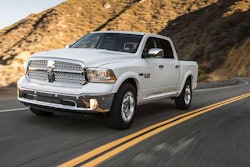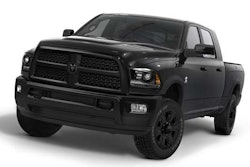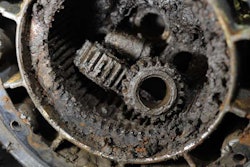If Super Bowl commercials and aggressive marketing have taught us anything, it’s that Ford trucks are “Built Ford Tough.”
But Ford, fresh off the launch of a revamped and re-engineered aluminum F-150, is out to prove the brand’s flagship vehicle is tested pretty tough, too.
The all-new aluminum-construction 2015 Ford F-150 – scheduled to go on sale in the fourth quarter of this year – has already scaled the highest points of the Continental Divide and endured some of the most extreme weather conditions on the planet. Before the first 2015 F-150 rolls off the assembly line, Ford says the truck will have been subjected to more than 10 million miles of combined real-world and simulated durability testing, more than any other generation F-150.
RELATED: The overlooked, less sexy side of being ‘Built Ford Tough’
“We wanted to build the toughest, most capable F-150, while making it as much as 700 pounds lighter,” says Pete Reyes, Ford F-150 chief engineer. “We challenged the team to torture the truck harder than any F-150 before it.”
As part of its testing, the new F-150 has towed trailers over mountain passes in temperatures above 120 degrees, faced frame-twisting terrain on an off-road course and trekked a frozen lake at minus 40 degrees.
It’s been locked in high-humidity chambers, immersed in salt vats and riverbeds.
Robots slammed its doors and tailgates, and dropped heavy objects onto the bed of the truck. It persevered through twisting and shaking from multiple directions.
Ford engineers say some tests are so extreme that a five-day period equals 10 years or 150,000 miles of abuse by the roughest customers.
The all-new F-150 has been through hundreds of torture tests. Here are the 10 toughest according to Ford (click the links to see video from the test):
Seven-channel input: Ford built a special torture rack that violently twists and shakes the truck seven ways – simultaneously – for five straight days, which Ford says simulates the equivalent of 225,000 miles. The frame and body are stressed to see how well the truck performs in situations that might bend the frame.
Silver Creek: The Silver Creek durability course in Romeo, Mich., combines two rough roads. One section of the route has 15 distinct types of chuckholes, while the other is made from broken pieces of concrete. Imagine hitting a crater-sized pothole every five feet for miles at 20 mph. With this road surface, Ford says 500 miles is equal to 20,000 miles on the country’s roughest roads.
Power Hop Hill: Ford says its washboard test track in Romeo was created to replicate a steep, off-road dirt trail in the Hualapai Mountains of northwest Arizona. The severe 11 percent grade – steeper than the final section of most ski jump ramps – stresses engine and transmission components when the wheels lose contact and then return to the surface.
Drum drop: Ford engineers dropped 55-gallon drums into the bed of the truck on an angle, making sure all of the force came down on the sharp rim of the drum. Engineers in Dearborn, Mich., then measure the impact and make adjustments until the cargo box floor is certified “tough.”
Corrosion bath: Ford developed a modified corrosion test using an aggressive acidified spray for the high-strength, aluminum alloy used in the 2015 F-150. After simulating 10 years of exposure, the aluminum material showed virtually no signs of degradation, according to Ford.
Davis Dam: The Davis Dam durability route stretches from just outside Bullhead City, Ariz., to the top of Union Pass. The F-150 climbed for 13 miles at posted speeds (varying from 35 mph to 65 mph) while pulling maximum trailer loads and running the air conditioning full blast in the heat of an Arizona summer. That’s the equivalent of running a half-marathon at Olympic-sprinter speed while carrying a 600-pound duffel bag in 120-degree temperatures, all on a 6 percent grade…251 times.
Stone Peck Alley: To test paint for the all-new F-150, engineers drove the truck 150 miles over gravel roads, then another 150 miles over pellets of extremely jagged scrap iron that is first passed through a blast furnace. Oversized tires spray the stones and scrap iron at every surface of the truck.
Engine thermal shock: F-150 engines are first placed in a special cell and hooked to a dynamometer, which simulates pulling a heavy trailer at full throttle up a steep grade (roughly 4500 RPMs). Next, thermal shock testing takes engines from the coldest polar vortex to extreme heat in just seconds. The engine coolant and oil are quick-cooled to minus 20 degrees in as little as 20 seconds, then the engine runs at maximum power while coolant and oil temperatures stabilize, first at 230 degrees and then at 270 degrees, before being chilled again. Ford says this process is run 350 times over more than 400 hours to prove the durability of the engine block, seals, gaskets, cylinder heads and liners.
Rock and stop: Ford says it performs 500 aggressive starts on a stand specially designed to torture rear axles. The stand creates impacts at nearly 2,000 lb.-ft. of torque – more 130-plus percent more torque than the truck is capable of making. The test is designed to ensure the rear axle and all of its parts can withstand the abuse.
Twist ditch: The twist ditch is a set of parallel dirt mounds built to create a situation in which one front wheel hangs in the air while the opposing rear wheel leaves the ground repeatedly. Only two small patches of rubber are left to make contact with a slippery surface and maintain traction, putting incredible stress on the truck’s body and frame.









